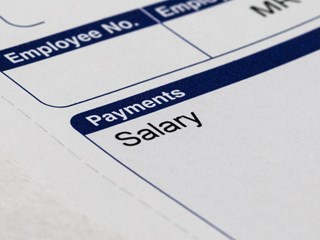
Regular pay rises may still be of concern for policymakers.
When accounting for inflation, UK regular pay between February and April fell 2.2% compared to the previous year, the Office for National Statistics (ONS) announced today.
“If you exclude bonuses, pay in real terms is falling at its fastest rate in over a decade,” said Sam Beckett, Head of Economic Statistics at the ONS.
When taking bonuses into account, this figure changes to a rise in pay of 0.4%.
“The high level of bonuses continues to cushion the effects of rising prices on total earnings for some workers,” she said.
While regular pay fell compared to the previous year, employees received an average regular pay increase, which excludes bonuses, of 4.2% between February and April this year.
This will be of particular concern for policymakers, like the Bank of England [BoE], due to rising inflation, according to Paul Craig, Portfolio Manager at Quilter Investors.
“Earlier this year, Andrew Bailey [Governor of the Bank of England] went as far as to urge workers not to ask for big pay rises in the face of spiralling inflation. Ultimately, this all translates to people’s earnings not keeping up with inflation and hampering people’s purchasing power,” he explained.
For Sarah Coles, Senior Personal Finance Expert at Hargreaves Lansdown, this wage increase is not sustainable in the long-term due to inflation.
“Rising inflation will pile the pressure on even more, and over time effective pay cuts are likely to spread. Already, not every company is boosting pay to keep pace with inflation,” she said.
Despite wages failing to keep pace with inflation, unemployment figures released today made for kinder reading.
“On the face of it, unemployment figures look rosy. The overall level continued to drop in the three months to April, and has finally fallen below the pre-pandemic level,” said Coles.
The latest data has estimated the UK’s employment rate at 75.6%, 0.2% higher than the previous three-month period.
Still, Beckett does highlight some cause for concern.
“Moreover, although the number of people neither in work nor looking for a job has fallen slightly in the latest period, that remains well up on where it was before COVID-19 struck,” she said.
Information is correct as of the date of publication (shown at the top of this article). Any products featured may be withdrawn by their provider or changed at any time. Links to third parties on this page are paid for by the third party. You can find out more about the individual products by visiting their site. Moneyfactscompare.co.uk will receive a small payment if you use their services after you click through to their site. All information is subject to change without notice. Please check all terms before making any decisions. This information is intended solely to provide guidance and is not financial advice. Moneyfacts will not be liable for any loss arising from your use or reliance on this information. If you are in any doubt, Moneyfacts recommends you obtain independent financial advice.